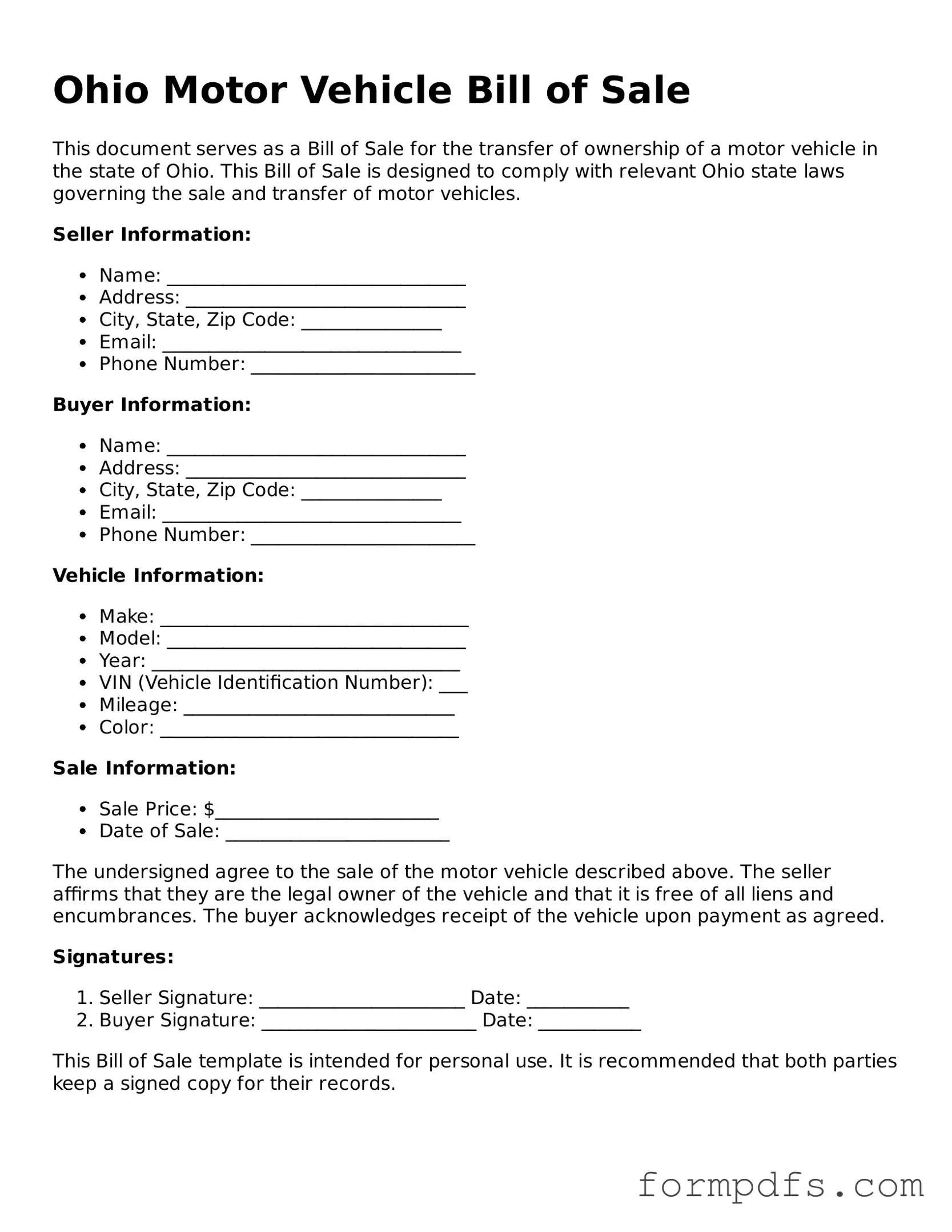What is the purpose of the Ohio Motor Vehicle Bill of Sale form?
The Ohio Motor Vehicle Bill of Sale form serves as a legal document that records the sale of a vehicle between a buyer and a seller. This form provides proof of the transaction and details such as the vehicle's make, model, year, and Vehicle Identification Number (VIN). It helps protect both parties by documenting the terms of the sale, including the purchase price and any conditions agreed upon. This form is particularly important for the buyer, as it may be required when registering the vehicle with the Ohio Bureau of Motor Vehicles (BMV).
Do I need to have the Bill of Sale notarized?
In Ohio, notarization of the Motor Vehicle Bill of Sale is not a legal requirement. However, having the document notarized can add an extra layer of security and authenticity to the transaction. It may help prevent disputes in the future by providing a verified record of the sale. If either party feels more comfortable with notarization, they may choose to have the document signed in the presence of a notary public.
What information should be included in the Ohio Motor Vehicle Bill of Sale?
Essential information that should be included in the Bill of Sale includes the names and addresses of both the buyer and seller, a description of the vehicle (including make, model, year, and VIN), the purchase price, and the date of the sale. Additionally, any terms or conditions of the sale, such as warranties or disclaimers, should be clearly stated. Both parties should sign the document to acknowledge their agreement to the terms outlined.
Is the Bill of Sale required for vehicle registration in Ohio?
While the Ohio Motor Vehicle Bill of Sale is not mandatory for all vehicle registrations, it is strongly recommended. The BMV may require a Bill of Sale when transferring ownership, especially for used vehicles. It serves as proof of ownership and can help facilitate the registration process. Buyers should keep a copy of the Bill of Sale for their records and present it when registering the vehicle to ensure a smooth transaction.
